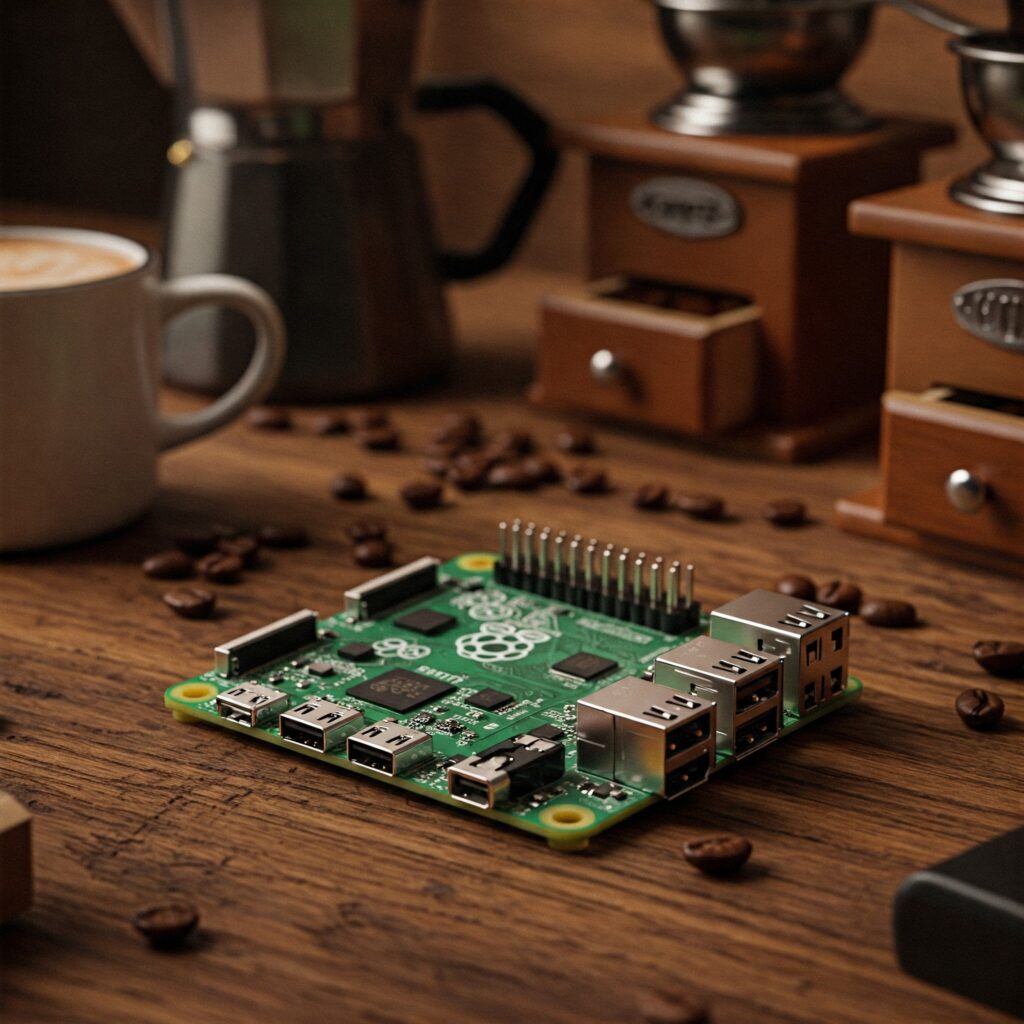
Pi Power Revealed: What Your Raspberry Pi Really Costs to Run in 2025
In the ever-expanding universe of DIY computing and IoT projects, the Raspberry Pi remains a versatile cornerstone for creators, developers, and hobbyists alike. Whether you’re building a weather station that runs on batteries, setting up a 24/7 home server, or creating an edge computing device, understanding your Pi’s power consumption is crucial for success. With the diverse range of Raspberry Pi models available in 2025, power requirements vary significantly – and knowing these differences can make or break your project.
This comprehensive guide delves into the real-world power consumption of various Raspberry Pi models, explores the factors that influence energy usage, and provides practical tips for maximizing power efficiency. Whether you’re concerned about energy costs, battery life, or selecting the right power supply, we’ve got you covered.
Understanding Raspberry Pi Power Basics
Before diving into specific models, let’s clarify how power consumption is measured. Power is typically expressed in Watts (W), which is calculated by multiplying voltage (V) by current (A) using the formula P = V × I.
Raspberry Pi devices generally operate at 5V DC, with current draw varying based on activity level and connected peripherals. This means power consumption is dynamic – a Pi sitting idle might draw minimal power, while the same device running intensive computations with multiple peripherals could consume significantly more.
Power Consumption of Different Raspberry Pi Models
Raspberry Pi 5
The flagship Raspberry Pi 5, with its powerful processor and expanded capabilities, draws more power than its predecessors:
- Idle: Approximately 3.0-3.5W (600-700mA at 5V)
- Under load: 7.0-9.0W (1.4-1.8A at 5V)
- Notable features: The Pi 5 implements improved power efficiency per computation compared to the Pi 4, but its higher performance ceiling means maximum power draw is greater. The onboard power management IC offers better regulation than previous generations.
Raspberry Pi 4 B
The workhorse Raspberry Pi 4 remains popular for many applications:
- Idle: 2.5-3.0W (500-600mA at 5V)
- Under load: 5.0-7.5W (1.0-1.5A at 5V)
- Notable features: Power consumption varies significantly based on RAM configuration (2GB vs 4GB vs 8GB models) and active interfaces.
Raspberry Pi 400
This integrated keyboard model based on the Pi 4 architecture shows similar consumption patterns:
- Idle: 2.7-3.2W (540-640mA at 5V)
- Under load: 5.5-7.5W (1.1-1.5A at 5V)
- Notable features: The larger form factor provides better thermal management, which can slightly reduce power spikes during sustained workloads.
Raspberry Pi 3 B+
This older but still useful model offers moderate power requirements:
- Idle: 1.9-2.3W (380-460mA at 5V)
- Under load: 3.5-5.5W (700-1100mA at 5V)
- Notable features: More power-efficient than the Pi 4 series, but offers significantly less computing power.
Raspberry Pi Zero 2 W
This compact powerhouse strikes an excellent balance between capability and efficiency:
- Idle: 0.5-0.7W (100-140mA at 5V)
- Under load: 1.5-2.2W (300-440mA at 5V)
- Notable features: Remarkable power efficiency makes it ideal for battery-powered projects.
Raspberry Pi Zero W
The original ultra-compact Pi remains the most power-efficient standard model:
- Idle: 0.4-0.5W (80-100mA at 5V)
- Under load: 0.8-1.5W (160-300mA at 5V)
- Notable features: Perfect for ultra-low-power applications where computing requirements are modest.
Factors Influencing Raspberry Pi Power Consumption
Several key factors dramatically affect how much electricity your Raspberry Pi uses:
CPU and GPU Load
The single biggest variable in power consumption is processor utilization. Running intensive tasks like video encoding, machine learning algorithms, or complex calculations can double or even triple power consumption compared to idle states.
Connected Peripherals
Each device connected to your Pi adds to the overall power budget:
- USB devices (particularly power-hungry ones like hard drives): 0.5-2.5W each
- HDMI displays: 0.5-1.0W per active connection
- Camera modules: 0.2-0.5W when active
- HATs and add-on boards: Varies widely from 0.1W to several watts
Network Connectivity
Active network interfaces contribute to power draw:
- Wi-Fi: 0.3-0.5W when active
- Ethernet: 0.2-0.4W when connected
- Bluetooth: 0.1-0.2W during active communication
Overclocking
Pushing your Pi beyond stock frequencies significantly increases power consumption and heat generation. Overclocked Pi 5 models can see power draw increase by 20-40% over standard settings.
Operating System and Software
Different operating systems and background services impact power usage:
- Lightweight distributions like Raspberry Pi OS Lite consume less power than full desktop environments
- Background services, automatic updates, and constant logging increase power draw
- Power management settings can significantly affect consumption patterns
External Storage
Storage devices can be surprising power consumers:
- USB flash drives: 0.2-0.5W
- Powered external HDDs: 2.0-5.0W
- SSDs: 1.0-3.0W depending on activity
Real-World Power Consumption Examples
To put these numbers in context, here are some typical usage scenarios:
- Headless server (Pi 4, no display, running web services): ~3.5W average
- Desktop replacement (Pi 5 with display, keyboard, mouse, running desktop environment): ~7.5W average
- Media player (Pi 4 streaming video to HDMI display): ~6.0W average
- Weather station (Pi Zero 2 W with sensors, running on batteries): ~1.0W average
- Home automation hub (Pi 4 with various USB devices): ~5.0W average
Choosing the Right Power Supply
Selecting an appropriate power supply is critical for stable operation:
- Raspberry Pi 5: Official recommendation is 5V/5A (25W) USB-C power supply
- Raspberry Pi 4: Requires 5V/3A (15W) USB-C power supply
- Raspberry Pi 3 B+: Works well with 5V/2.5A (12.5W) micro-USB supply
- Pi Zero models: Can operate reliably with 5V/1.2A (6W) micro-USB supply
Using underpowered supplies often leads to subtle but frustrating issues:
- Random reboots and crashes
- SD card corruption
- The dreaded “rainbow square” power warning
- Peripherals failing unpredictably
Tips for Optimizing Raspberry Pi Power Efficiency
When every milliwatt matters, consider these optimization strategies:
- Underclock the CPU when maximum performance isn’t needed
- Disable unused interfaces with commands like:
sudo rfkill block wifi # Disable Wi-Fi sudo rfkill block bluetooth # Disable Bluetooth tvservice -o # Disable HDMI output - Use lightweight operating systems like Raspberry Pi OS Lite or DietPi
- Optimize software by removing unnecessary services and scheduling resource-intensive tasks
- Implement power management tools like PowerTOP or TLP where available
- Choose power-efficient peripherals and disconnect unused devices
- Consider a lower-power Pi model for tasks that don’t require maximum performance
Conclusion
Understanding your Raspberry Pi’s power consumption is essential for designing reliable and efficient projects. From the ultra-efficient Pi Zero W at under 1W to the powerful Pi 5 that can draw up to 9W under load, each model offers a different balance of performance and power efficiency.
By selecting the appropriate model for your needs, pairing it with the right power supply, and implementing proper power optimization techniques, you can ensure your Raspberry Pi projects run reliably whether they’re powered from the wall or operating on batteries in the field.
Remember that real-world power consumption varies based on your specific configuration and workload, so consider measuring the actual draw of your completed project using a USB power meter for the most accurate assessment.
